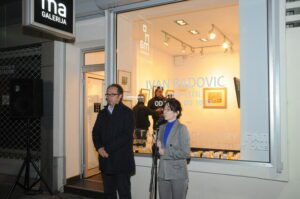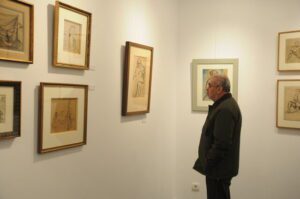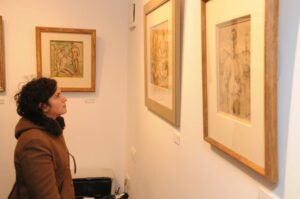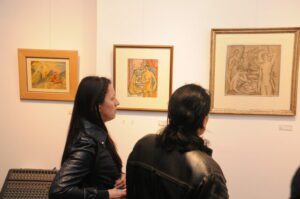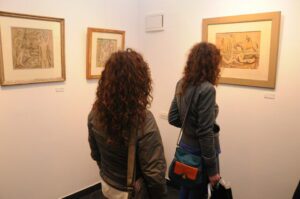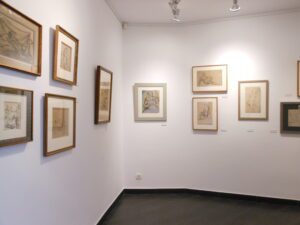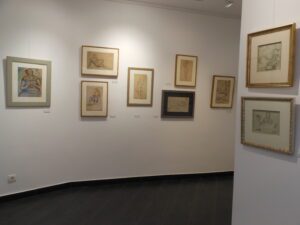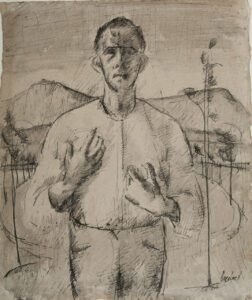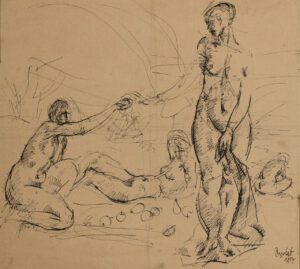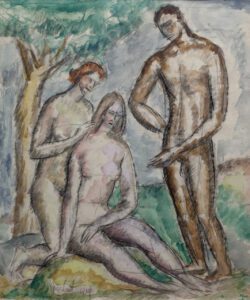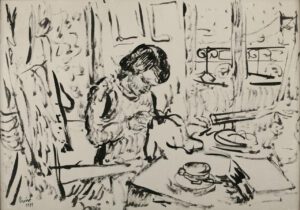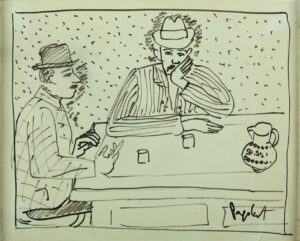20 November - 10 December 2012
SUMMARY
Ivan Radović (Vršac, 21 June 1894 – Belgrade, 14 August 1973)
His father was a clergyman, his elder brother, Milorad (18921934) was en gaged in photography. Radović nished Teachers’ College in Sombor and from 1917 to 1919 studied painting at the Art Academy in Budapest, with Professor Ist van Réti. In 1918 he spent a month in a painters’ colony in Nagybanya, on a spe cial grant. In Budapest he moved in the circles of avantgarde artists and got ac quainted with the art of cubism, expressionism and Hungarian activism. He drew a lot, particularly nudes with bodies shaped in the constructivist and expressive manner. In 19191920, he was at the Art Academy in Prague, with Professor Joseph Loukota. He frequently saw Milan Konjović, a friend from Sombor, and Borislav Bogdanović. The Prague Academy did not have a major in uence on his painting, but the contemporary Czech art, particularly the one that developed from cubism, left a deep imprint. After 1921 he travelled to Vienna and Munich, in 1925 to Paris. In 1922 he took part in the Fifth Yugoslav Art Exhibition in Belgrade, as a mem ber of the group Slobodni (Free Artists), called by the critics (Todor Manojlović) our „neoclassical“ or „constructivist“ artists. Radović then returned to Sombor in order to study constructive and cubist forms (abstract watercolours, drawings, collages). In 1925 he had a solo exhibition in Belgrade. From 1926 onwards he concentrated on problems of form, and his interests progressed from constructivism and expres sionism to abstract art. His inspiration after 1935 was neoclassicism and he turned to nudes represented in mythological and allegoric themes. Radović moved to Belgrade in 1927, where he painted and played pingpong. He began to paint na ivelike scenes and had a busy schedule of exhibitions (1928, 1929, 1932, 1933), either on his own or as a member of the group Oblik (Form). From 1932 to 1940 he composed his paintings in an intimist manner, turned towards the inner world and space, thematically inclined to nudes, occasional stilllifes or interiors. His in timist interests were most directly expressed after his second sojourn in Paris, in 1937, where he was fascinated by Bonnard’s paintings. He spent some war years in a POW camp in Germany, but afterwards returned to Belgrade. Only after 1950 did Radović get integrated into the new society. He was a member of the group Šestorica (Six Artists) and focused on rural countryside, which earned him the epithet of the painter of „romanticism from Vojvodina“. The essential framework of Radović’s painting were villages in Bačka, represented in an atmosphere of opti mism, humanism and openheartedness. He exhibited his works in Belgrade in 1952 and 1960, in Zrenjanin and Subotica in 1963, in 1964 in Vršac, in 1966 in Novi Sad, in the Gallery of Matica Srpska. He received the Politika award from the Vladis- lav Ribnikar Fund in 1967. A retrospective was organized in the Gallery of the Ser bian Academy of Sciences and Arts in 1971 – the author of the exhibition was Mi odrag B. Protić and the show was visited by thirty thousand people. That year Ivan Radovićreceivedthehigheststateaward(theAVNOJaward). HediedinBelgrade in 1973 and was buried in the Avenue of the Notable. Radović was also awarded in Paris, Philadelphia, Brussels.
Artworks
- More about the artis
